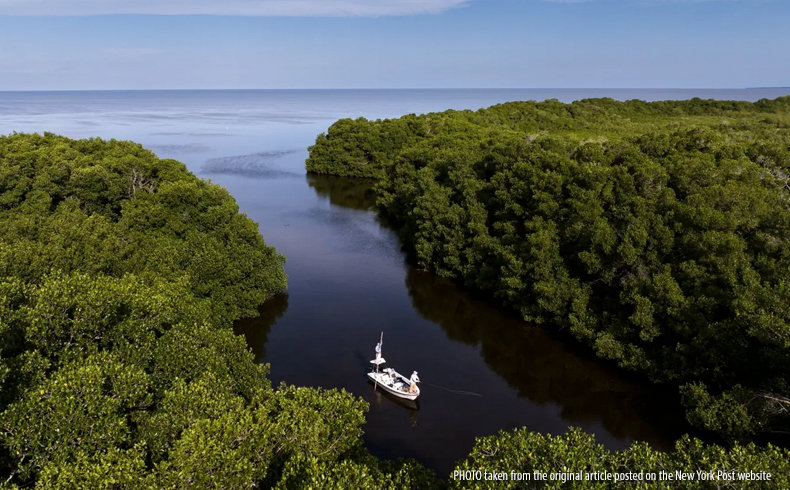Angling for a hook up? Here’s a guide to the best fishing in Mexico








By Will C. Farley
Article Published on The New York Post website on May 2023.
Whether it’s spirited, sprinting sailfish off the Yucatán or a bevy of big, beautiful bass in Sinaloa, anglers of every stripe are spoiled for choice on the shores of Mexico.
Of course, it doesn’t hurt that the waters are clear, clean, studded with wildlife preserves and UNESCO world heritage sites, and often a stone’s throw from a radiant beach.
With the help of some experts, we’ve turned up the best of the best lodges and guiding services, so you can fish what’s good when it’s good.
“One of the best things about fishing in Mexico is the diversity,” said Jeremy Kehrein, veteran fly fisherman and manager of travel sales at Orvis.
This world-class fly-fishing outfitter only endorses guides or fishing lodges after rigorous research and first-hand experience. An Orvis endorsement is a gold standard for fly fishers, and the three endorsed lodges in Mexico live up to the diversity of experience that Kehrein loves.
The newest addition to the Orvis fold is Casa Clorinda (four-night, three-day packages starting at $4,300 per angler) in the Bay of Campeche on the Yucatán Peninsula. While the UNESCO World Heritage Site architecture is a huge draw for many tourists, for fishermen, it’s the more than 60 miles of protected mangroves just north of the city.
It was love at first sight when Enrico Puglisi, a New Yorker by way of Sicily, first touched down and hit the undeveloped mangroves 12 years ago. He built his career as an innovative and highly sought-after hand-tied fly maker, but after that trip, he decided to keep a foot near the fishing and renovated a 240-year-old house with modern amenities.
Recently, he opened the house to guests, and fishermen have been flocking to fish for juvenile tarpon who love the warm, shallow water of the mangroves. With Enrique’s guidance, a day on the water can go from good to gangbusters.
One state over is Quintana Roo, most known for its perfect Caribbean beaches around Cancún and Tulum. Many fishermen know to go to Isla Mujeres for sailfish, but for a real taste of the wild Mayan coastline, head to Xcalak (ish-cal-ack), near the border with Belize. A flight into Chetumal and a two-and-a-half-hour ride leave you on an unspoiled section of beach boasting the world’s second-largest reef.
In Xcalak, the Orvis-endorsed Xflats is the perfect place to post up (four-night, three-day packages starting at $3,295 per angler).
Non-anglers can relax on the pristine beaches in hammocks, soak in the sun or enjoy snorkeling and scuba diving. Bonefish and permit fish hit there year-round.
The West Coast of Mexico’s Baja Peninsula is very different from the Caribbean. The waves of the Pacific bash the coastline but provide a playground for windsurfers.
The farther south you move down Baja, the warmer the waters get, which is perfect for fish. With ReelBaja (another Orvis-endorsed outfit; seven-night, six-day packages starting at $4,695 per angler), fly fishers can explore the coastline looking for tuna, billfish, dorado and the highly coveted roosterfish.
Fly fishing is about the love of the game; the movements are athletic, practiced, and nuanced.
Sport fishing, on the other hand, is chess, where an angler pits themselves against a wily opponent with only a spinning rod in hand.
Captain Jimmy Nelson, star of fishing television’s “Living the Dream,” has been traveling Baja sport fishing for decades and especially enjoys the Gulf of California.
“The nutrient rich waters bring in the big ones,” he said, which is fun for the summer months.
But his hottest tip is that the fish migrate to the warmer waters in the protected parts of the Magdalena Bay (lovingly referred to as “Mag Bay”) on the Pacific coast in winter, and, “It’s the best Striped Marlin fishing I’ve seen anywhere in the world.”
Captain Jimmy recommends Baja Fishing Adventures (two-day, three-night packages starting at $1,106 per angler), which runs boats up and down the coastline from Mag Bay to Cabo and the East Cape.
For freshwater fishermen, few places can truly compare with El Salto, an hour outside of Mazatlán. It’s been called “The absolute best trophy lake in the world” by Bassmaster Magazine and boasts an average daily catch (and release) of 70 hulking largemouth bass per boat. But there’s a new kid on the block just a few minutes away: Lake Picachos.
“It’s the hottest bass lake on the planet,” said Fresh Water Fishing Hall of Famer Billy Chapman Jr. “It’s our eighth year on the lake, and so far, we have incredible numbers and great size. One day a father and son fishing with fly rods landed 324 fish! It’s wild.”
Chapman runs the fishing-world-famous Anglers Inn on Salto and Picachos (four-night, three-and-a-half day packages starting at $2,195 per angler), which are a must-fish for any bass lover